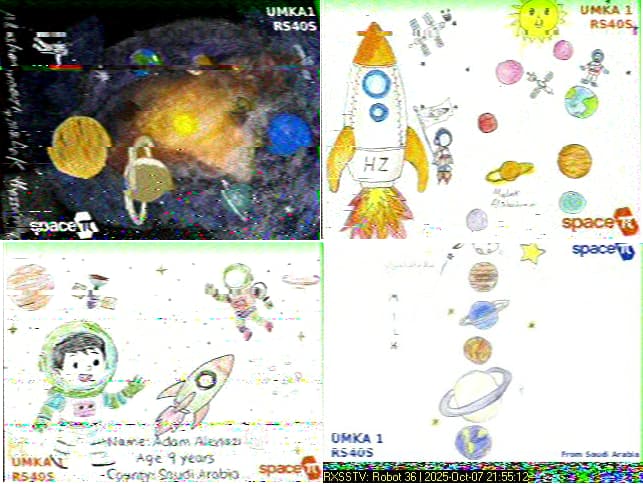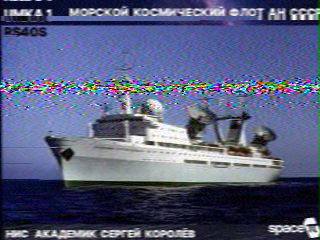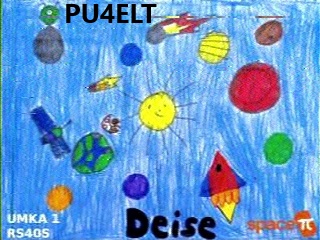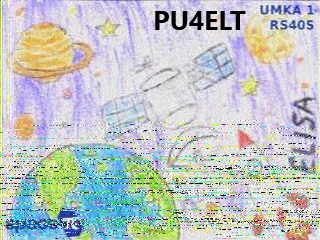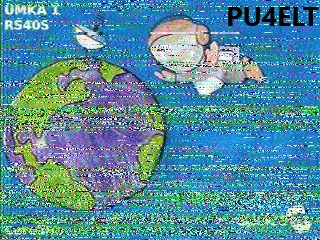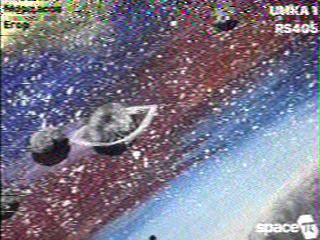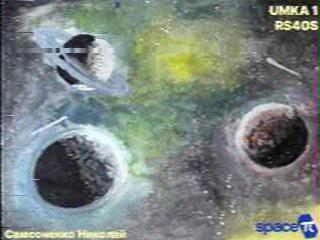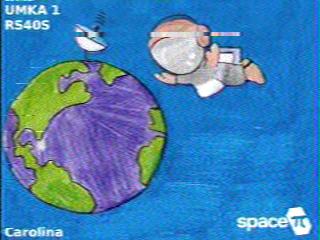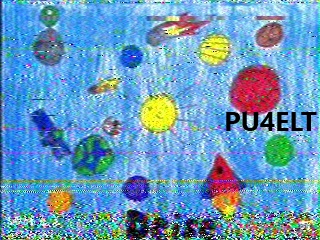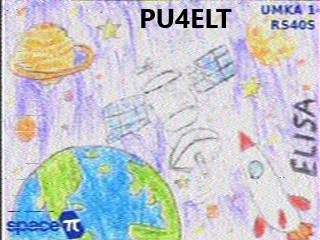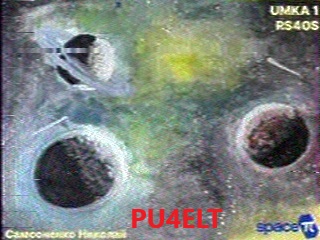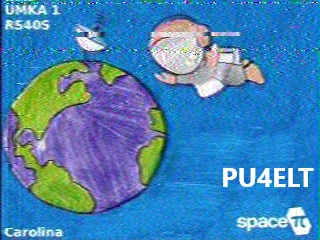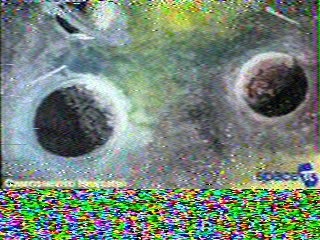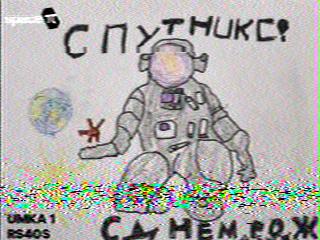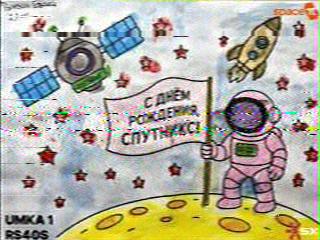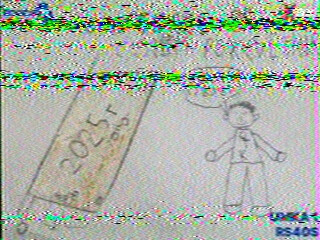Any more images from umka-1, just wondering if any one has seen the link to apply for the Diploma for October 7 and 8th 2025
Cheating a bit by using a website decode my .ogg file:
However, why can I decode it like that but it did not decode on my observation?
give me link to your observation
Here:
The satnogs-flowgraphs currently only supports PD120 mode.
This satellite used Robot36, the flowgraph might try to latch on to the transmission, but it will just be garbled.
"Today, the UMKA-1 satellite will broadcast a short, special series of images as part of a local event in Kaliningrad featuring schoolchildren. However, the broadcast will not be local and will end in the evening Moscow time upon entering the Mission Control Center’s radio visibility zone. Afterward, UMKA-1 will take a short break to “rest” before the weekend. ![]()
![]()
Broadcast parameters:
• Frequency: 437.625 MHz
• Mode: Robot36 (SSTV)
• Start: October 10, 07:53 UTC
• End: October 10. -
And on Saturday, UMKA-1 will be back on the air, delighting radio amateurs, students, and schoolchildren with a new series of images!
On October 11, at 00:44 UTC, the broadcast will begin over Brazil, featuring drawings by children from Brazil ![]() and Russia
and Russia ![]() .
.
An extended broadcast is planned for Sunday. ![]() "
"
telegram: onthe_air
12:17 UTC over Japan.
GenAI said “Marine Space Fleet of the USSR Academy of Sciences: Research Vessel Academician Sergey Korolyov”.
UmKA-1 (RS40S) flying over Brazil ![]() transmitting drawings by Brazilian children
transmitting drawings by Brazilian children ![]()
Unfortunately, I observed a lot of ionospheric scintillation when receiving the second and third images! Even so, I’m super happy ![]()
- 2025-10-11 00:45UTC (Robot-72)
- 2025-10-11 00:47UTC (Robot-72)
- 2025-10-11 00:48UTC (Robot-72)
UmKA-1 over Brazil !!
!!
can you explain this, how its affected uhf signal and how you sure the blur line caused by this phenomn.
Ionospheric scintillation causes rapid variations in signal strength. Even with a very strong satellite signal, you’ll notice a very rapid variation between a very strong signal and no signal at all (hence the lines in the SSTV images I received).
This occurs because the electron density in the ionosphere varies rapidly in certain regions (usually further north in my country).
"A broadcast of children’s drawings is planned from the UMKA-1 (RS40S) satellite and other Space-π CubeSats on October 17-18.
The broadcast will involve not only UMKA-1, but also the HyperView-1G, ArcticSat-1, Vizard-Meteo and Nanozond-1 will join in a little later.
Broadcast parameters:
(SSTV, Robot36 mode)
UmKA-1 (RS40S)
• Frequency: 437.625 MHz
• Start: October 17, 16:54 UTC
![]() The broadcast is expected to end on Saturday evening, but please be aware!
The broadcast is expected to end on Saturday evening, but please be aware!
![]() Pauses or early termination of the transmission are possible (due to rising temperatures, low batteries, etc.) "
Pauses or early termination of the transmission are possible (due to rising temperatures, low batteries, etc.) "
